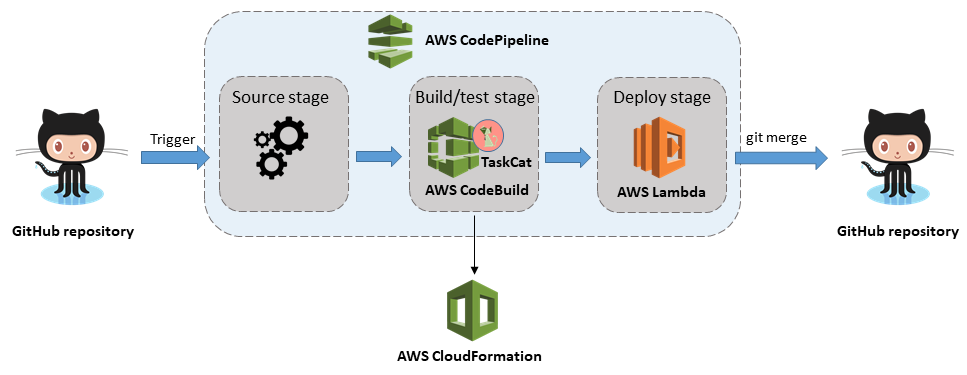Moving to AWS Cloud: Faster Application Deployment
Question
My On-Premise application's deployment cycle is roughly around 3-4 weeks.
On refactoring this huge application, its features can be deployed on AWS cloud in a matter of 2-3 days.
What is the benefit achieved by moving to the AWS cloud?
Answers
Explanations
Click on the arrows to vote for the correct answer
A. B. C. D.Answer: C.
Diagrams:
The scenario blends itself into the Business Agility value proposition where new features can be deployed faster to reduce errors.
The microservices architecture paradigm assists in Business Agility, where a large Monolith application is broken down into smaller functional units that can be developed & deployed faster.
AWS cloud, on the other hand, provides services like Lambda, Elastic Container Services, Elastic Kubernetes Service that assists in developing & deploying microservices & deployment tools (CI/CD) like CodeBuild, CodePipeline for automating the deployment process.
Combined, they provide an environment supporting an Agile Business.
Option A is incorrect.
Elasticity is the ability to scale resources on-demand whenever there is an increase in load on the existing infrastructure.
This Value proposition will benefit in substantial cost savings where I need not have to guess my capacity upfront.
Option B is incorrect.
Flexibility is the ability to utilize a broad range of products depending on the application & infrastructure demands.
For example, there are a broad range of EC2 instance pricing models ranging from On-Demand instances to Reserved Instances to Spot Instances and EC2 instance types like General Purpose, Compute Optimized, Memory Optimized.
This will help with Low or No cost entries into the AWS cloud.
Option C is CORRECT.
Using an Agile environment provided byAWS Cloud, I can release application features much faster than a traditional On-Premise environment.
Option D is incorrect.
Operational resiliency results in the improvement of defined SLA's and reducing unplanned outages that would result in downtime.
The features of High Availability, Fault Tolerance gives rise to a resilient system.
References:
https://www.youtube.com/watch?v=sA79G-zoSI0 https://www.testpreptraining.com/tutorial/aws-cloud-practitioner/define-the-aws-cloud-and-its-value-proposition/ https://youtu.be/Fl57qGYwdK4
The benefit achieved by moving the On-Premise application to the AWS cloud is agility.
Agility refers to the ability to move quickly and easily with minimal disruption or downtime. By refactoring the application and deploying its features on AWS cloud, the deployment cycle time has been reduced from 3-4 weeks to 2-3 days. This reduction in deployment time allows organizations to respond faster to changing business requirements, customer needs, and market trends.
Moreover, AWS offers a range of tools and services that enable organizations to scale up or down their resources as needed, providing elasticity. Elasticity is the ability to automatically scale computing resources up or down to meet changing demands. This means that organizations can quickly and easily adjust their resources to match their workload, without having to worry about the underlying infrastructure.
Flexibility is another benefit of moving to the AWS cloud. AWS offers a wide range of services and tools, allowing organizations to choose the services that best fit their needs. This flexibility enables organizations to use the tools and services that are most appropriate for their specific application, resulting in improved performance and cost savings.
Resilience refers to the ability of a system to recover quickly from failures and disruptions. AWS provides several features and services, such as backup and disaster recovery, that enable organizations to maintain high levels of resilience.
In summary, while all of the options listed (elasticity, flexibility, agility, and resilience) are benefits of moving to the AWS cloud, the reduction in deployment time from 3-4 weeks to 2-3 days primarily highlights the agility that comes with cloud migration.
